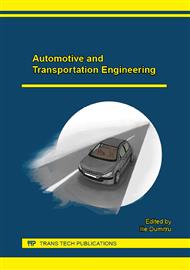p.443
p.455
p.461
p.472
p.480
p.491
p.497
p.503
p.512
Studies Regarding Semaphoring Effectiveness in Oversaturated Intersections
Abstract:
Need for transport accelerated growth recorded in the past years results in worsening road congestion phenomenon, with negative effects in all domains of life. Thus, some road junctions’ capacity is exceeded during peak hours and traffic lights are not effective any more. In these situations, modifications to infrastructure or/and changes in the local policy plan are required. However, these cannot be performed immediately and remain rather a solution that will operate later. The authors attempt to find out a satisfying semaphoring scheme for these time slices, outlining the effects.
Info:
Periodical:
Pages:
491-496
Citation:
Online since:
January 2016
Authors:
Keywords:
Price:
Сopyright:
© 2016 Trans Tech Publications Ltd. All Rights Reserved
Share:
Citation:


